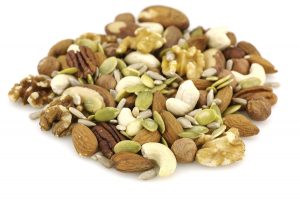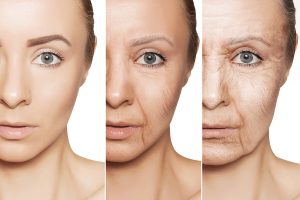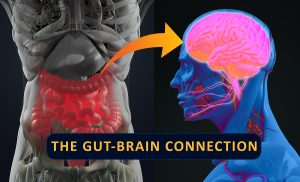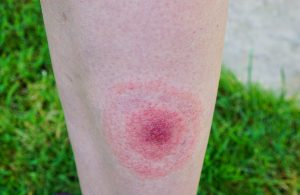Recently a study from California and France showed that animal protein is bad and nut protein good for you. This review goes back to this original study from April 2, 2018. Other studies have shown that there is a higher mortality with a meat-based diet.
How the study was done
Researchers followed 81,337 men and women from the Adventist Health Study-2 for a time of over 9.4 years. Between 2002 and 2007 they also researched the diet of the study participants. They used food frequency questionnaires. 2276 cardiovascular deaths occurred during the observation period. The risk for cardiovascular mortality regarding meat protein consumption was 1.61-fold. The cardiovascular risk for the nuts and seeds protein consumption group was 0.60. This means that the meat-consumers had a 61% higher heart attack and stroke rate. In comparison, the group that consumed nuts and seeds had 40% less heart attacks and strokes than people on a regular diet.
Discussion of the study
This study is rather large and went on for a long time (9.4 years). This gives the study great statistical power. The message from the study is quite clear. The more animal protein you eat, the higher your risk will be to succumb to cardiovascular disease. Having a heart attack or stroke prematurely will shorten your lifespan. In contrast, those whose protein source comes mainly from nuts and seeds are better off. They have a 40% lower probability to die from heart attacks or strokes.
Other studies regarding “animal protein is bad and nut protein good for you”
.
Diabetes caused by red meats, processed meats, whole grains and sugar-sweetened beverages
A European study was analyzing risk foods that can lead to diabetes. https://www.ncbi.nlm.nih.gov/pubmed/28397016 The publication of the study was in May 2017. Red meats, processed meats, whole grains and sugar-sweetened beverages caused a 3-fold higher risk to develop type 2 diabetes. This was compared to people avoiding those foods. Study participants consuming legumes and nuts had a low risk of developing diabetes. In between was a moderate risk group who ate refined grains, eggs, fruit, vegetables, dairy and fish. Consumption of risk-decreasing foods resulted in a 42% reduction of diabetes.
Foods that caused heart attacks and strokes
A March 7, 2017 study from Boston analyzed the key foods that cause increased mortality. Intake of high sodium, highly processed meats, sugar-sweetened beverages and also unprocessed meats caused heart attacks and strokes. In addition, a lack of nuts/seeds, low consumption of seafood omega-3 fats, low vegetable and low fruit consumption also caused mortality from heart attacks and strokes.
Nuts reducing inflammatory biomarkers
A September 2016 study from Brigham and Women’s Hospital, Boston, MA looked at the correlation of nut consumption and an anti-inflammatory response. 5013 patients from the Nurses’ Health Study (NHS) and Health Professionals Follow-Up Study received food consumption questionnaires.
Research used two parameters for measuring inflammatory biomarkers: on the one hand blood tests checked the C-reactive protein (CRP), on the other hand they observed interleukin 6. Interestingly there was a correlation between nut consumption and decrease of inflammatory markers. When 5 or more helpings of nuts per week were part of the dietary habits, there was a 20% reduction in the CRP value and a 14% reduction of interleukin 6 , which was a difference to those persons who never consumed nuts. This is significant, because we know that inflammation of the lining of the arteries is a cause for high blood pressure, heart attacks and strokes. Inflammation of the arteries can also cause type 2 diabetes.
Dietary intake among US adults, 1999-2012
This June 2016 study has the title ”Dietary Intake Among US Adults, 1999-2012”. Comparisons were made between a previous dietary study of 1999-2000 and now. The investigators noted some improvements in dietary habits. The persons consumed more whole grains and nuts or seeds. They also had slightly increased fish and shellfish intake. On the other hand, consumption of sugar-sweetened beverages had decreased. But other food components like salt intake, total fruits and vegetables, processed meats and saturated fat had not changed. There was an increased consumption of whole fruit and a decrease of 100% fruit juice (which is sugar laden). Unfortunately there was also some bad news: low-income Americans still have poor food intake, so do non-Hispanic blacks or Mexican American adults.
Mediterranean diet can prevent cognitive decline
A July 2016 review shows that a Mediterranean diet can prevent cognitive decline like dementia and Alzheimer’s disease. In this overview the authors have collected evidence showing that adherence to a Mediterranean diet does indeed prevent cognitive decline. The Mediterranean diet consisted of intake of fruit, fish, vegetables and less consumption of sugar, red meat and dairy. The researchers found that the incidence of cancer, strokes, heart attacks and diabetes were all lower, as was dementia. They pointed out that MRI studies have revealed that the brain volume showed a reduction by 5% per decade after the age of 40. From the third to the 8th decade of our lives the short-term memory can show a reduction of about 50%.
Deterioration of general health related to cognitive decline
The authors point out that the combination of heart disease, stroke and diabetes are often an indication that the person’s overall health is declining. Cognitive decline will soon follow, when physical decline is evident. What people often do not realize is that all of these conditions are related to decades of poor diets. Change the diet to a Mediterranean diet, and your heart health will improve; also a stroke and diabetes may be prevented. The interesting observation is that often cognitive functioning also improves. This makes sense: if the brain circulation improves, oxygen and nutrients can reach the brain cells again and brain function can now improve.
Conclusion
I mentioned a recent publication, which stated that animal protein is bad and nut protein good for you. When I looked at other publications I found this confirmed. Finally I reviewed a study that investigated the use of the Mediterranean diet to improve cognitive function. It became apparent that physical illnesses, like heart attacks, strokes and diabetes, have also a connection to a loss of cognitive function in older age. It may point to a general aging of the lining of the arteries. An anti-inflammatory diet, like the Mediterranean diet, has the potential to improve the lining of the arteries. This leads to a reduction of medical problems like heart disease and diabetes. In addition it can also reverse cognitive decline. The switch to a Mediterranean diet is not dramatic! It can, however, dramatically improve your overall health and wellbeing as you age.
More info: https://www.askdrray.com/healthy-olive-oil/















